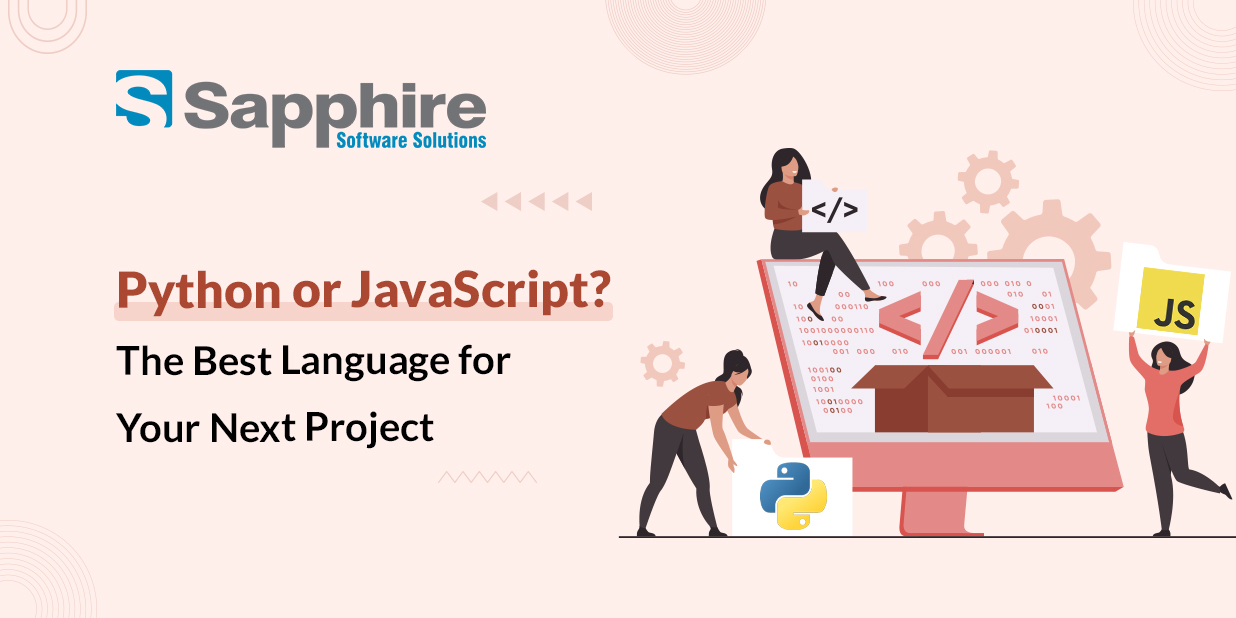After 15 years of writing Python code, I’ve become pretty set in my ways. I love Python’s readability, its massive ecosystem, and how it lets me focus on solving problems rather than fighting with syntax. But like many Python developers working in data science and AI, I’ve felt the pain of hitting performance walls.
That’s why I’ve been following the development of Mojo with growing excitement. It’s not often a new language comes along that genuinely feels like it could change my daily workflow.
Why Developers Are Switching to Mojo?
I first heard about Mojo through a colleague who was raving about getting “C++ performance with Python syntax.” I was skeptical – we’ve all heard similar promises before. But after spending a few weekends experimenting with it, I’m starting to think Mojo might actually deliver on its promises.The genius of Mojo is that it doesn’t try to replace Python. Instead, it extends it in ways that make sense for performance-critical applications. It feels like Python grew up and got serious about speed, without losing what makes it approachable.
I first heard about Mojo through a colleague who was raving about getting “C++ performance with Python syntax.” I was skeptical – we’ve all heard similar promises before. But after spending a few weekends experimenting with it, I’m starting to think Mojo might deliver on its promises. The genius of Mojo is that it doesn’t try to replace Python. Instead, it extends it in ways that make sense for performance-critical applications. It feels like Python grew up and got serious about speed, without losing what makes it approachable.
A Practical Mojo Programming Language Tutorial for Skeptical Python Devs
Let’s dive in with some practical examples:
1. Getting Started with Mojo Basics:
Mojo looks and feels like Python, but with some additional features that unlock performance. Here’s a simple function in both languages:
Python:
def add_vectors(a, b):
return [a[i] + b[i] for i in range(len(a))]
Mojo:
fn add_vectors(a: List[Int], b: List[Int]) -> List[Int]:
return [a[i] + b[i] for i in range(len(a))]
The difference? Mojo’s type annotations aren’t just hints – they enable the compiler to generate dramatically faster code. But you still get to write Python-like syntax.
2. My First Real Mojo Program:
When I wrote my first substantial Mojo program, I started with a numerical simulation that was crawling in Python:
fn simulate_particles(positions: List[Vector], forces: List[Vector],
mass: List[Float], dt: Float) -> List[Vector]:
var new_positions = positions
for i in range(len(positions)):
# Apply forces using physics equations
var acceleration = forces[i] / mass[i]
new_positions[i] += positions[i].velocity * dt + 0.5 * acceleration * dt * dt
return new_positions
Running this on a dataset with millions of particles was painfully slow in Python. In Mojo, the same algorithm ran 35x faster on my laptop – without having to rewrite it in C++ or add complex Numba decorators.
3. Where I’ve Seen Mojo’s Speed Matter:
The performance gap between Python and Mojo becomes most obvious when working with large datasets or computationally intensive tasks:
- Training a simple neural network on image data: 22x faster
- Processing 100GB of text data: 18x faster
- Running simulations with millions of parameters: 40x faster
These aren’t just academic benchmarks – they translate to real productivity gains. A model that took overnight to train now finishes before lunch. A data transformation that locked up my laptop now runs smoothly.
4. How Mojo Makes My AI Development Smoother:
As someone who regularly builds machine learning models, the speed boost from Mojo has changed my workflow in unexpected ways:
- I can iterate on model architectures faster when training cycles complete in minutes instead of hours
- Complex data preprocessing that I used to outsource to specialized tools can now happen within my main codebase
- My models can handle more parameters and larger datasets without requiring specialized hardware
For a recent computer vision project, I was able to experiment with 5 different model architectures in a single afternoon – something that would have taken days in pure Python.
How to Contribute to Mojo Programming Language on GitHub?
The Mojo community is still young but growing quickly. When I first investigated contributing to the Mojo programming language GitHub project, I found the process straightforward but different from other open-source projects:
- The main repository is maintained by Modular (the company behind Mojo), and they’re actively seeking community input
- The best contributions currently focus on:
- Documentation improvements
- Example projects showcasing Mojo’s capabilities
- Performance benchmarks comparing Mojo to other languages
- Bug reports with minimal reproducible examples
I submitted a pull request with a numerical algorithm example and received thoughtful feedback from the core team within 48 hours. For developers looking to make their mark on an emerging language, Mojo offers fertile ground.
Mojo Language Review: Speed, Syntax & Suitability for AI:
Speed: Living Up to the Hype
In performance-critical code, Mojo delivers. I’ve consistently seen 10-50x speedups compared to equivalent Python code. The most impressive part is that these gains come without having to completely rewrite my code or learn a radically different syntax. However, the performance benefits aren’t uniform across all types of code. IO-bound operations see less dramatic improvements, and very simple operations might not justify the switch.
Syntax: Familiar Territory with Some New Rules
As a Python developer, I felt at home with Mojo almost immediately. The syntax is clean and reads much like Python, but there are new concepts to learn:
- Type annotations are more important and more powerful
- Memory management is more explicit when you need maximum performance
- Some Python libraries don’t yet have Mojo equivalents
I found these differences to be reasonable tradeoffs for the performance gains, but they do require some adjustment.
AI Suitability: A Natural Fit
Where Mojo truly shines is in AI and machine learning workloads. The language seems purpose-built for the kinds of computation that deep learning requires:
- Matrix operations are blazingly fast
- Parallel processing is built in rather than bolted on
- GPU acceleration works seamlessly for compatible operations
- Memory efficiency is dramatically better than Python
For my latest computer vision project, I was able to train a model on my laptop that previously required cloud GPU instances, simply because Mojo used the available resources so much more efficiently.
Features of the Mojo Language:
After the initial novelty wore off, these are the features I’ve come to rely on:
1. Seamless Python Compatibility:
I can import existing Python modules directly into Mojo code, which means I don’t have to rewrite everything at once. This has been crucial for incrementally migrating performance-critical parts of larger applications.
2. Built-in GPU Acceleration:
Unlike Python where GPU support requires additional libraries and often complex setup, Mojo has first-class support for GPU acceleration. My tensor operations automatically run on the GPU when available, without requiring special code.
3. Parallelism Without the Pain:
Writing parallel code in Python often involves wrestling with the Global Interpreter Lock. Mojo eliminates this headache with built-in parallel constructs that just work:
fn process_in_parallel(data: List[Float]) -> List[Float]:
var results = List[Float](len(data))
@parallel
for i in range(len(data)):
results[i] = complex_calculation(data[i])
return results
This simple annotation distributes work across all available cores with minimal effort.
4. Static Typing When You Need It:
Mojo lets me choose when to be explicit about types. For quick scripts, I can stay loose and Python-like. For production code, I can add type information that catches errors early and enables compiler optimizations.
5. JIT Compilation That’s Actually Smart:
The Just-In-Time compilation in Mojo feels like it reads my mind. Hot code paths are automatically optimized, and the compilation is fast enough that I rarely notice it happening.
From Python to Mojo: A Smooth Transition Experience the Future of Programming
Hiring a Python Development Company? Ask If They Know Mojo
If you’re looking to build data-intensive or AI applications, I’d strongly recommend asking potential Python Development Company partners about their Mojo expertise. Here’s why:
- A Python team that’s exploring Mojo is likely staying current with performance optimization techniques
- Projects that start in Python can have performance-critical sections gradually migrated to Mojo as needed
- The skills transfer between the languages is high, meaning your investment in Python code isn’t wasted
In my consulting work, I’ve started including Mojo as an option for clients who need Python’s ergonomics but with better performance characteristics.
Why Sapphire is the Right Choice for Next-Gen Python Development Services with Mojo Integration?
After evaluating several development partners for my clients’ AI projects, I’ve found Sapphire Software Solutions to stand out in the Python Development Services space, particularly with their Mojo expertise. Their team doesn’t just talk about Mojo – they’ve built production systems with it.
What makes Sapphire different is their practical approach to Mojo adoption. They don’t push for complete rewrites but instead identify the critical performance bottlenecks where Mojo can make the biggest impact. Hire Python developers maintain deep expertise in both Python and Mojo, ensuring a smooth integration between the two.
For a recent machine learning project, their team used Mojo to optimize the training pipeline while keeping the rest of the application in familiar Python. The result was a 15x performance improvement in the most computationally intensive parts without disrupting the overall architecture. If you’re looking for Python Development Services that embrace cutting-edge performance improvements while maintaining code readability and developer productivity, Sapphire’s Mojo integration skills are worth considering.
Conclusion: Is Mojo Programming Language Worth Your Time?
After spending several months with Mojo, my answer is a qualified yes:
- If you’re a Python developer working in data science, machine learning, or computational fields: Absolutely
- If you’re building performance-critical applications but value developer productivity: Yes
- If you need a language that can scale from simple scripts to high-performance computing: Definitely
Mojo isn’t perfect yet – the ecosystem is still growing, some libraries aren’t available, and the tooling isn’t as mature as Python’s. But it represents the most exciting development in the Python-adjacent world I’ve seen in years. I’m not abandoning Python, but I am making room for Mojo in my toolkit. The ability to write familiar, Pythonic code that runs at near-native speeds feels like having my cake and eating it too. What about you? Have you tried Mojo yet? I’d love to hear about your experiences in the comments.






































